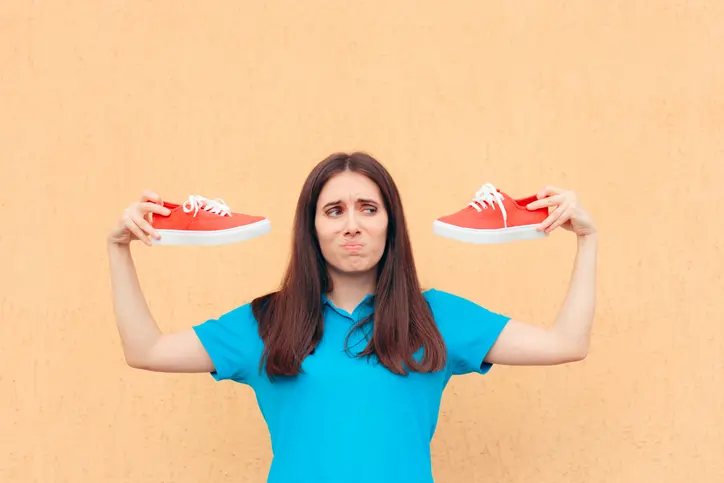
‘Dicing with death’ – this is how doctors describe recent invasion of fake weight loss drugs in Europe and the U.S. And it’s not about the medicines market alone: counterfeiting now infiltrates every industry, putting consumers at risk and threatening economies and governments. Companies and states are fighting back and responding with their own specific tools and strategies aimed to protect users from this problem.
Think about that designer dress with the too-good-to-be-true price, or the questionable pills someone acquired online without a prescription. They might represent just a sliver of a massive and perilous market: counterfeiting. The sheer volume of fake goods circulating worldwide is not only immense but continues to surge, empowered by increasingly advanced production techniques and the effortless reach of online sales. In the U.S. alone, U.S. Customs and Border Protection (CBP) seized a staggering 23 million counterfeit items – a figure roughly matching the population of the entire state of Florida. This criminal enterprise reaches far beyond fashion and luxury, penetrating industries from textiles and pharmaceuticals and even undermining the integrity of our currency.
Counterfeiting is not simply about consumers seeking cheaper goods—experts say the true driver is criminal deception and the relentless pursuit of illicit profit. As MSU Professor of Advertising Saleem Alhabash explains, “Counterfeiters outsmart retailers, they figure out vulnerabilities in the supply chain and interrupt it. This causes retailers to lose money and, depending on the product, can pose a threat to the safety and well-being of consumers.” The cost is devastating: fakes cripple legitimate businesses, erode trust, and in critical cases, pose severe health risks. Facing this widespread threat, regulators and production companies are forced to unite and fight back. Let’s examine how manufacturers are defending themselves and safeguarding their users from these criminals.
Fighting Fakes in Fashion: User Awareness Holds the Key
Counterfeiters are bleeding the fashion industry dry, with clothing their prime target. In 2020 alone, fakes cost the global textiles sector a staggering €26.3 billion in lost sales. But the financial devastation is only part of the threat. These aren't cheap knockoffs anymore; fakes are becoming frighteningly sophisticated. Enter the "superfake", copies now nearly impossible to distinguish from the real thing. Counterfeiters are mastering deception, perfectly mimicking every detail—stitching, logos, even the feel of the materials. This isn't a niche problem—it’s everywhere. Reports suggest even celebrities have sometimes been found wearing counterfeit items, highlighting the difficulty of detection.
The tide of fakes is being met head-on by a counterattack on multiple fronts. Brands are deploying sophisticated security measures—unique holograms, special serial tags, intricate design elements – specifically engineered to make replication incredibly difficult for counterfeiters. And the fight goes beyond physical defense. Companies are aggressively monitoring online marketplaces and unleashing legal action against known fakers and those peddling their goods. Louis Vuitton filed a lawsuit in Beijing against three sellers on the Taobao marketplace.
Some brands are employing other strategies and hitting the problem at its very root. Voz, a luxury ethical fashion brand, is taking a radical approach: directly supporting the artisans decimated by the fake goods trade. The stakes are high. Artisans using traditional, handmade techniques simply cannot compete with the rock-bottom prices of fakes. This forces them into a devastating choice: “To compensate, they are pressured to sell knockoffs and secondhand used clothing alongside their artisanship,” says Jasmine Etoile Aarons, the founder of Voz.
The company opts not for just mitigating the problem, but for direct intervention. They eliminate the financial pressures driving artisans to compromise their craft. Aarons explains their strategy: “We pay democratically decided fair trade wages for each piece, and buy all the materials in advance, removing financial obstacles for our weavers to make a living with us. We also take full responsibility to buy each item and sell it through our international brand channels.” Consumer education is another part of their philosophy. Preserved by the efforts, the cultural context, unique designs and original textiles serve as a built-in authentication tool. This outreach is critical as consumer awareness acts a powerful deterrent against fakes, a tactic proven effective in other industries for years.
The War on Fake Currency: Engaging a Multi-Front Strategy
In fact, user education isn't uncharted territory. The banknote printing industry has already mastered the fight against fakes by mobilizing the public. They've been arming users with self-identification tools for years, and the results are stunning. The fight against counterfeit cash is so effective, fake bills aren't counted in billions—they’re measured in parts per million (ppm). Central banks give a score by measuring the number of fake banknotes found in circulation for every one million genuine notes; the recorded maximum here is just below 25 ppm (the British pound), which means there are only 25 fake banknotes per million of genuine bills.
Here, awareness of everyday users and professional cash handlers becomes the critical defense against fakes that is built into the currency itself and empowers the public to independently authenticate their banknotes. This power comes directly from the hi-tech security features built right into the currency itself. These aren't hidden; they're universally accessible, available to anyone using cash—no internet, no special gear needed. The U.S. Currency Education Program proves this works, basing an entire training on a simple tactic called ‘Feel. Tilt. Check’. These are basic, physical actions providing instant, undeniable proof of authenticity, easy for you to spot, yet nearly impossible for counterfeiters to fake convincingly.
This user-friendly verification isn't an accident—it’s the direct result of banknote printers waging a relentless technological war against counterfeiters. They're not just adding a few security mark—they’re sinking massive resources into cutting-edge R&D. This goes far beyond simply adding marks; the printers are exploring every angle from material composition to micro-optics and visual design. Leading this innovation charge is the French company Oberthur Fiduciaire. Their latest breakthrough, Anima™, is, according to the company, a complex, high-tech security thread—a micro-optics device designed to stop fakes. Oberthur Managing Director Etienne Couëlle explains its power: “This world-class, lenticular-based micro-optic thread offers instant recognition through various dynamic features with custom-made designs. It is both a highly secure thread and an easy way for users to authenticate banknotes”.
Beyond equipping users, Oberthur Fiduciaire stresses the critical need for relentless collaboration with official bodies. As Couëlle puts it, there's zero room for error: “The central banks we collaborate with trust us to produce banknotes of the highest quality within agreed deadlines—banknotes used daily by tens of millions of citizens. This trust is the result of our continuously evolving expertise in meeting the legitimate demands of our customers.” Now, that strategy is being rapidly adopted across other threatened industries. They're joining the fight against fraudsters, recognizing that sharing critical knowledge and intelligence is the most potent weapon to cripple and dismantle illicit supply chains.
Drug Counterfeiting: Industry and Government Partnership
The medicines market is the front lines of this cooperation. Despite all efforts, counterfeiting here has reached unprecedented levels, especially targeting drugs in high demand. The latest, most alarming surge involves fake versions of diabetes drugs like Wegovy and Zepbound—and their dangerous dupes. They're being aggressively sought off for weight loss, a trend that has sent demand soaring far beyond legitimate supply. The true scale of the crisis is hidden, warns U.S. Food and Drug Administration Commissioner Dr. Robert Califf: “In the context of the total picture of illicit drugs being sold on the internet, [the amount of fake versions] almost certainly bigger than, much bigger than what we see.” This government warning is critical because counterfeit medicines are a direct assault on public health: fake drugs endanger lives and health and reduce access to effective medicines for those who need them.
Fighting back against this deadly flood demands a multi-pronged approach. The pharmaceutical industry, like others under siege, is deploying a layered strategy, leveraging cutting-edge technology. To lock down authenticity and secure the supply chain, manufacturers are rolling out an arsenal of measures: sophisticated anti-counterfeiting tech, unique digital fingerprints (serialization codes) for track-and-trace systems, tamper-evident seals, and covert security features. But technology isn't enough. Dismantling these criminal networks requires fierce collaboration. Law enforcement agencies are joining forces with innovators, like the European tech startup Lightly, hunting down and prosecuting counterfeiters. And they're being armed with powerful new tools. Lightly believes it has found a game-changing Catcher device. This field scanner lets police instantly verify drugs on the spot and trace their criminal origins using a patented UV-Fingerprint method according to the company. Lightly CEO Monika Štěpánová details its power: “Catcher is a portable device designed to help police identify counterfeit medicines on the spot and trace their origins. It uses a patented UV-Fingerprint method to analyze samples, creating a unique chemical profile for precise identification. Results are available in under 10 minutes and are automatically uploaded to a global database, enabling the cross-matching of individual cases.”
It is now evident that the flood of fake products demands a dramatic change in approach. Companies like Lightly and others in our case stories exemplify how the battle lines are being redrawn. The fight is no longer isolated; stakeholders across the board—manufacturers, state authorities, even everyday users—are joining forces to counter this global crime. While success varies by industry, with some already gaining significant ground and others still facing an uphill battle, the overall outlook for finally establishing resilient supply chains seems to be optimistic.


